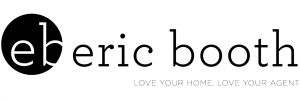Homeowners’ Insurance Facts Every Buyer Should Know
When borrowing money to purchase your new dream home, lenders will require that you also purchase insurance. Having a comprehensive homeowners’ policy with your mortgage is in effort to protect the lender’s interests, as well as yours, but purchasing insurance can be confusing for most. There are so many features and fine print that it can be difficult to truly understand which options offer the most protection or how you can save money on premiums. So, we’re taking a closer look at some basic homeowners’ insurance facts every home buyer should know to better evaluate their options. Here are some things to consider to protect your financial future:
- There are many types of policies – While home insurance is pretty standard across the U.S., there are some states and insurers that offer different policies. The most popular policy is the HO-3 which gives you open perils coverage, coverage that protects you against disasters (except those specifically excluded) such as theft, fire, and tornadoes. It insures your personal belongings, but only as those named perils specifically in the policy. The HO-5 policy, on the other hand, though more expensive, gives you open perils coverage for both your home’s structure and your personal property. It isn’t offered by every insurer, but it could be worth looking into if you have many valuable possessions. Then, there’s the HO-6 policy for condo or co-op owners. This policy covers the structural parts of the building that you own against named disasters, including your belongings and personal liability. With all of these policies, as well as others, you’ll have three options for the amount of coverage you receive, minus your deductible, when you make a claim. These include cash value coverage, replacement cost coverage, and guaranteed or extended replacement cost coverage.
- Not all damage is covered – Standard homeowners’ insurance will give you many protections, such as personal belongings, structure, loss of use, and liability, but this doesn’t provide complete coverage of everything. Most policies state that something will only be covered if damage, loss, etc. is “sudden and accidental.” This means that a leaky faucet, for example, or a sewer backup, or even mold, that leads to damage over several months likely won’t be covered because it would be considered property maintenance neglect. Things like tornadoes, windstorms, and hurricanes are generally covered. But, other “sudden” disasters, including floods and earthquakes actually require separate insurance. You’ll really want to evaluate your circumstances and your physical, geographic location when determining how much coverage you could potentially need.
- There are coverage limits – Home buyers are often surprised to learn that some of their belongings may not be fully covered in their insurance policy. Generally, your valuable personal possessions are insured against disasters and theft under your policy, but certain types of items come with coverage caps. Things like electronics and jewelry, for instance, are typically limited to one or two thousand dollars of coverage. So, if yours amount to well over that amount, you’re going to be coming up very short in the event you have to file a claim. Where these losses happen also needs to be taken into consideration. For instance, you’ll need to pay close attention to the homeowners’ insurance limits on your possessions inside as well as outside of your home. If something is stolen from your car, your homeowners’ policy may cover it, but the payment for off-premises claims is typically a small percentage of your coverage limit.
- Pets can affect your coverage – Homeowners’ insurance typically includes liability for all members of your household, including your pets. But, insurers are very particular about which dog breeds they’ll insure. Some breeds most commonly excluded from coverage include Mastiffs, Pit Bulls, Rottweilers, Huskies, German Shepherds, and many more, all of which make up an extensive list of large, powerful breeds that have been put on a blacklist that can lead to you paying inflated rates or cost you the ability to be insured altogether.
As you go about shopping around for homeowners’ insurance, it’s a good idea to have already created a thorough home inventory list. Good records of all of your personal belongings and their appraised value will absolutely pay off should you ever need to file a claim. Tuck your list away in a safe place or store it online, and don’t forget the importance of photographic proof!










